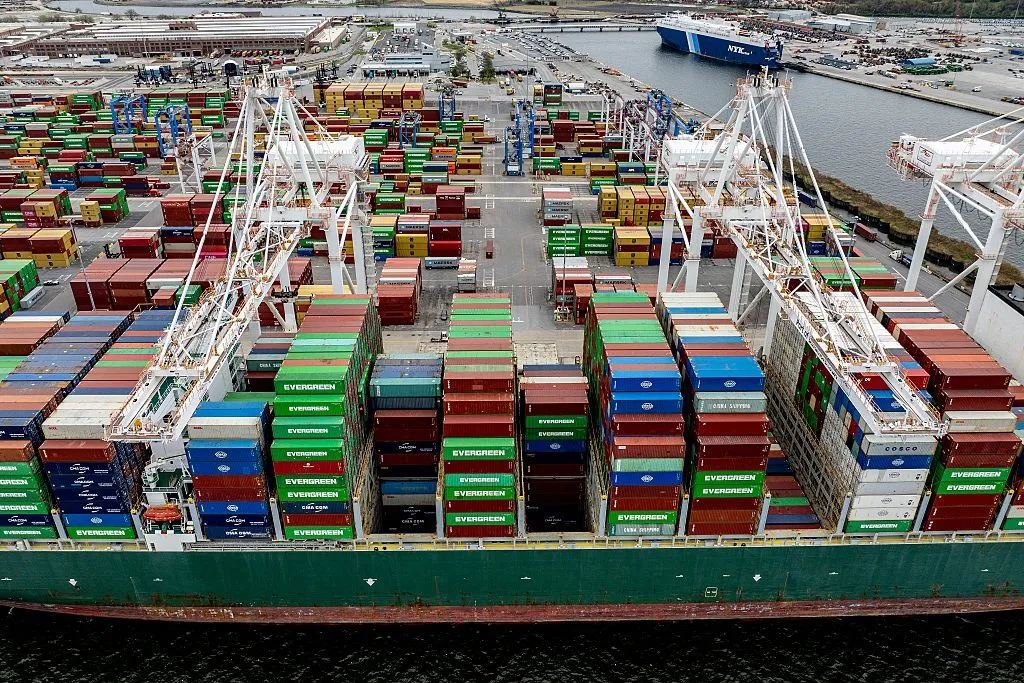There has been a historic upheaval in American trade policy.
The announcement of Donald Trump’s so-called “reciprocal tariffs” on 2 April – what he called “liberation day” – sent a shockwave through the global trading system and financial markets.
And the President’s 90-day pause on some of these tariffs on 9 April set off a relief rally in stock markets.
But where has the rollercoaster of new US tariff announcements – and partial reversals – actually left the situation?
And what will it all mean for global trade?
What does the pause mean?
The announced pause only applies to some of the new tariffs – taxes on imports – that Donald Trump announced on 2 April.
The new minimum 10% tariff rate, which came into effect on Saturday 5 April, is still in place for goods coming from all countries, including the UK.
There are exemptions for pharmaceuticals and microchips and some other items.
But that 10% tariff in itself is a major change in America’s trading relations with all other countries.
And for China, the rate will not fall at all but will be hiked further to 125%, plus another 20% linked to the drug fentanyl.
Nevertheless, the pause means the rates above 10% for 59 other territories will be suspended until July.
That’s something of a relief for these nations, especially developing countries that rely heavily on manufactured goods exports to America.
Exports to the US are equivalent to 30% of Vietnam’s economy and there were fears a 46% tariff would have plunged the South East Asian nation into recession.
But Vietnam and others will still be paying the new 10% minimum tariff rate when previously many were facing substantially lower levies.
And countries such as Australia and South Korea, which had free trade deals with Washington – meaning zero tariffs on many exports to the US – will still see a major break in their trading relationships with America. They too will be subject to the 10% tariff.
The president has unilaterally torn up those free trade deals – as well as the one America had with Canada and Mexico, which Trump signed in his first term.
What about Trump’s other tariffs?
Numerous other tariffs Trump has announced since returning to the White House remain in place and are not affected by the pause.
That includes:
- 25% tariffs on all car imports to America, including from the UK
- 25% tariffs on steel and aluminium imports, including products made from these metals
- 25% tariffs on many imports from Mexico and Canada.
In big picture terms, economists warn the extent to which the pause actually changes the direction of overall US trade policy should not be exaggerated.
Bloomberg Economics has calculated the US’s average tariff on all its imports was set to go to 27% before yesterday’s pause, the highest in more than 100 years.
And after the pause they estimate it will rise to 24%, still the highest in a century.
The pause on some tariffs has made relatively little difference for two reasons.
First, because the 10% universal rate on all US imports still applies.
Second, because of the president’s simultaneous hike, alongside the pause, in the tariff rate imposed on all imports from China, from 104% to 125%.
The US imported $440bn (£340bn) of goods from China in 2024, according to official US data.
That still represented around 13% of all US goods imports.
What does it mean for the global economy?
Most economists think, even after the pause, this all represents a major shift in US trade policy, which will harm the global economy.
And the intensification of the US trade war with China on top of this is expected to do further damage.
China and the US between them were projected to account for around 43% of the global economy by the International Monetary Fund in 2025.
A slowdown in both economies as a result of the trade conflict will have a knock-on negative effect on most other countries.
And economists caution that the impact of the additional uncertainty created by Trump’s pause will in itself further undermine the world economy by holding back corporate investment.
What about the UK?
Before the Trump pause, some hoped the UK could potentially benefit in some ways from the new round of Trump tariffs.
The UK’s relatively lower tariff of 10% could have incentivised some multinational companies to produce more in Britain – rather than in the EU, which was facing a 20% tariff – for export to the US.
With the EU now facing the same US tariff as the UK that incentive has gone, although the UK government hopes to ultimately negotiate a free trade deal with the US to eliminate the 10% tariff.
It’s also the case that the majority of the UK’s exports to the US are services, rather than goods, and services are not affected by the US tariffs.
Nevertheless, the UK is now in the same position as every almost every other country in the world with respect to US tariff barriers on goods.
The UK is still facing America’s 25% tariff on aluminium and steel exports – and also on products derived from those metals.
The UK exported $720m (£558m) of raw steel and aluminium to America in 2024 according to United Nations data.
And calculations by the Global Trade Alert research group suggest UK exports of metal products that are exposed to these new tariffs amounted to $2.9bn in 2024.
The UK is also subject to the new blanket US 25% import tariff on cars.
Data from the Office for National Statistics shows the UK exported $9bn of cars to the US in 2024, around a quarter of its total car exports.

